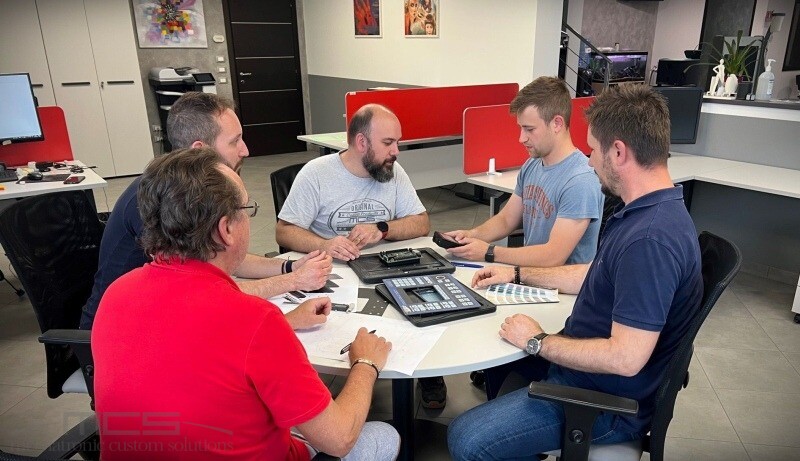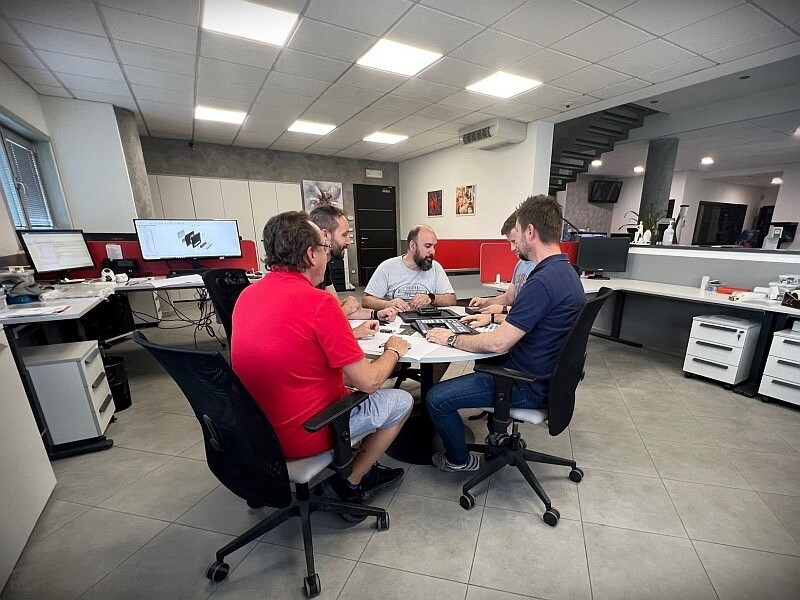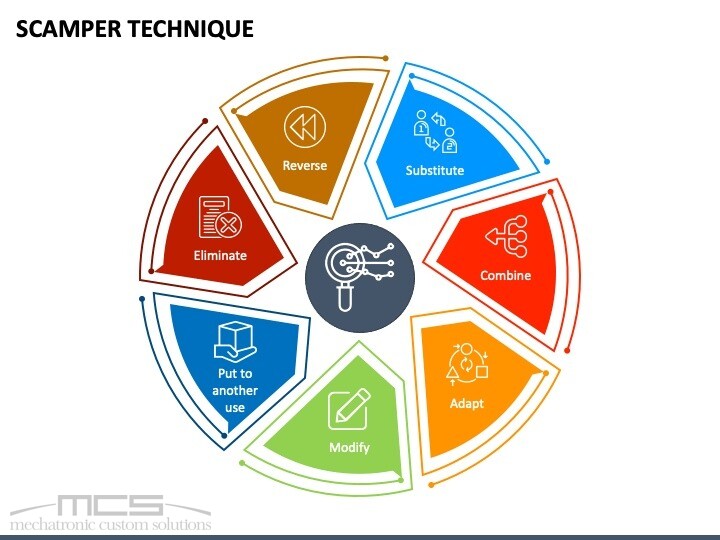A complex and in some respects “delicate” work has forced us to propose an alternative solution. In cases like this, creative techniques like the SCAMPER model are useful.
Developing new ideas for products and services is one of the most difficult parts for any company. You need to innovate regularly if you want to stay one step ahead of the competition and meet special demands. In other words, it could be your team’s creativity that determines your company’s competitiveness.
Let’s immediately clarify that creativity is not a kind of “divine inspiration” that we don’t know when it arrives, but a real skill that can be trained and developed. In this regard, there are also creative techniques that can help us such as the SCAMPER. But let’s take a step back.
The proposal for a different construction mode
I was recently confronted with a customer who needed a membrane to match with one of his plastic enclosures and a printed circuit board with mechanical keys.
Based on his initial input, we proposed a solution, however, it was rejected. The reason? The client tells me that the proposed solution is not good because it has already been tested in the past.

Obviously, a confrontation arises, during which I try to make the client understand that a bad experience does not make the rule. Many aspects need to be evaluated, without assuming that, with seemingly equal solutions, the results are then the same, i.e., failure.
What materials had the previous supplier used? Had they been told of all the possible critical aspects of the application? For example, an extreme sub-zero temperature: -30°C.
Had specific tests been conducted before field use? Even if we are talking about relatively simple objects, a sensitive application requires a proper approach: you can’t take it “lightly”.
Therefore, I proposed an additional solution, not because the first one was unreliable, but in order to give more security to the client based on experiences gained in similar operational areas.
It was recommended a construction mode with special features of MCS (not found by other competitors), peculiarities not visible from the outside of the product, which apparently looks the same as others.
Differentiating factors relate to the choice of materials and-as already pointed out-the way the product is constructed. The latter has already been used in other rather heavy applications, and is able to ensure all the guarantees of functionality, durability and reliability required by the customer.
However, I fear that, despite all the efforts and evidence of some case histories, that fateful previous experience has left a “prejudice” that is difficult to unhinge.
The application of the SCAMPER method

Beyond what will be the client’s final choice, the prompt proposal of an alternative solution was the result of applying in part the SCAMPER creative technique . We often apply this technique in an “informal” way, but theory suggest that it should be applied methodically to derive maximum effectiveness.
We can consider the SCAMPER method as a refinement of brainstorming. It was Bob Eberle, a student of Osborn (creator of brainstorming) who made the brainstorming technique more pragmatic and easier to use.
This is how the SCAMPER method was born, an acronym for a sequence of action verbs: Substitute (replace), Combine (unify), Adapt (adjust), Modify (change or maximize), Put to another use (assign, propose another use), Eliminate (delete), Reverse (rearrange or reorganize).
To better understand how it works, it is useful to turn words into questions.
- Replace. Can anything be replaced?
- Combine. Is it possible to unify multiple elements?
- Adapt. Can I adjust it to my needs?
- Modify. Can I change it?
- Put to another use. Can I use it for another purpose?
- Delete. Is it essential or can I eliminate/reduce it?
- Reversal. Can I change the order, the sequence of a step, an aspect of the process?
Applied to our business:
- Replace. Knowing the scope of operation, some materials can be replaced first.
- Combine. You can unify ideas or materials.
- Adapt. By having all known information from the customer (scope of operation, critical issues, past experience, etc.) I can adjust a product to various needs.
- Modify. I can change the product if necessary. I can change the shape, pattern, color, etc.
- Put to another use. I can think other examples of uses in similar operational areas.
- Delete. Applicable in some cases (not the one presented), it allows you to find out what to reduce, eliminate, simplify, omit, shrink, compact, etc.
- Reversal. You can change the sequence of a step, an aspect of the process using an uncommon product structure.
The SCAMPER method poses generic questions, which must be contextualized to the scope of application. In fact, according to experts, it can be applied in all fields.
Therefore, when you think about your existing product line through the lens of these seven points, you may be able to think of new products that might respond to market demands, or see the possibility of bring your current offerings to new markets in another form.

Deepening in detail each of the seven points, and their possible combinations, would be complex. Therefore, to all those who want to learn more about this method and creativity techniques in general, I recommend the book “Tools for Creativity” by Michael Michalko, Unicomunicazione.it Editions.
It is a classic of creativity, a manual that combines the best techniques to generate ideas and turn them into reality. These include the SCAMPER method.


